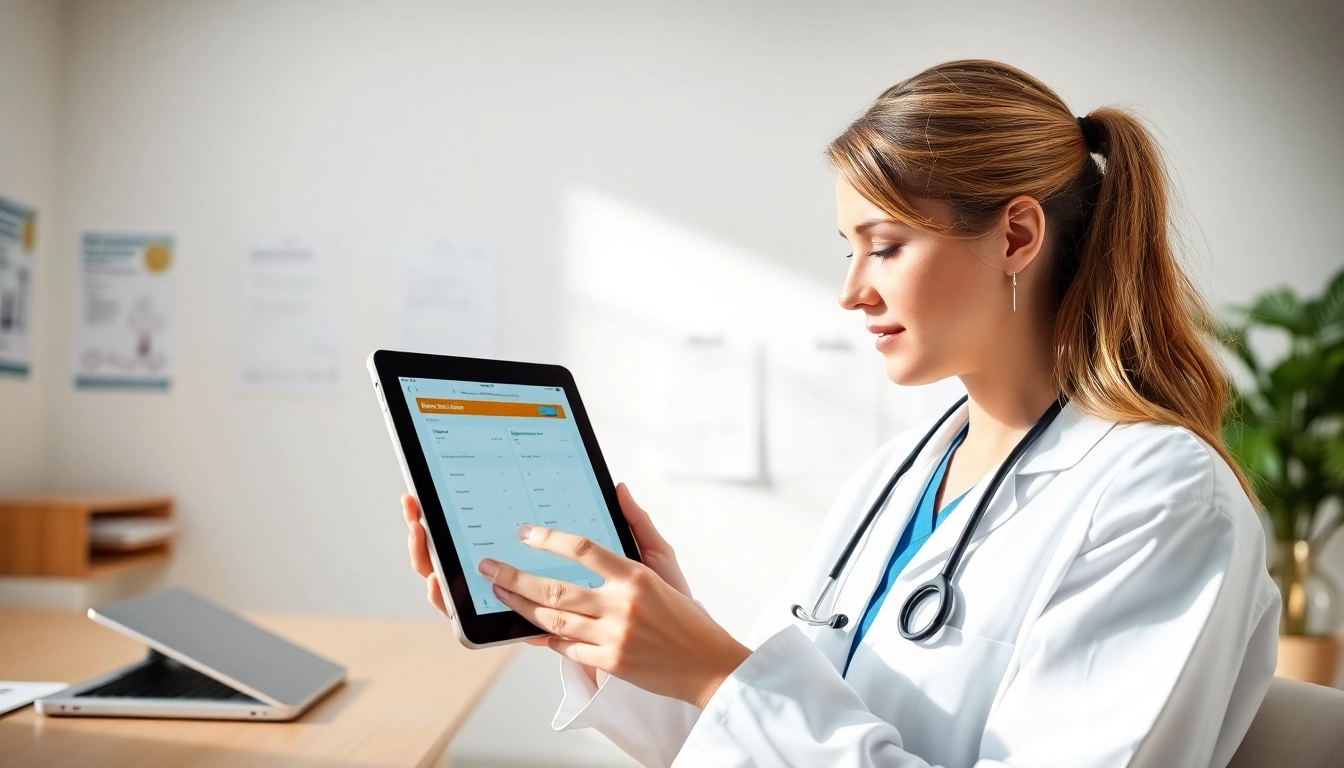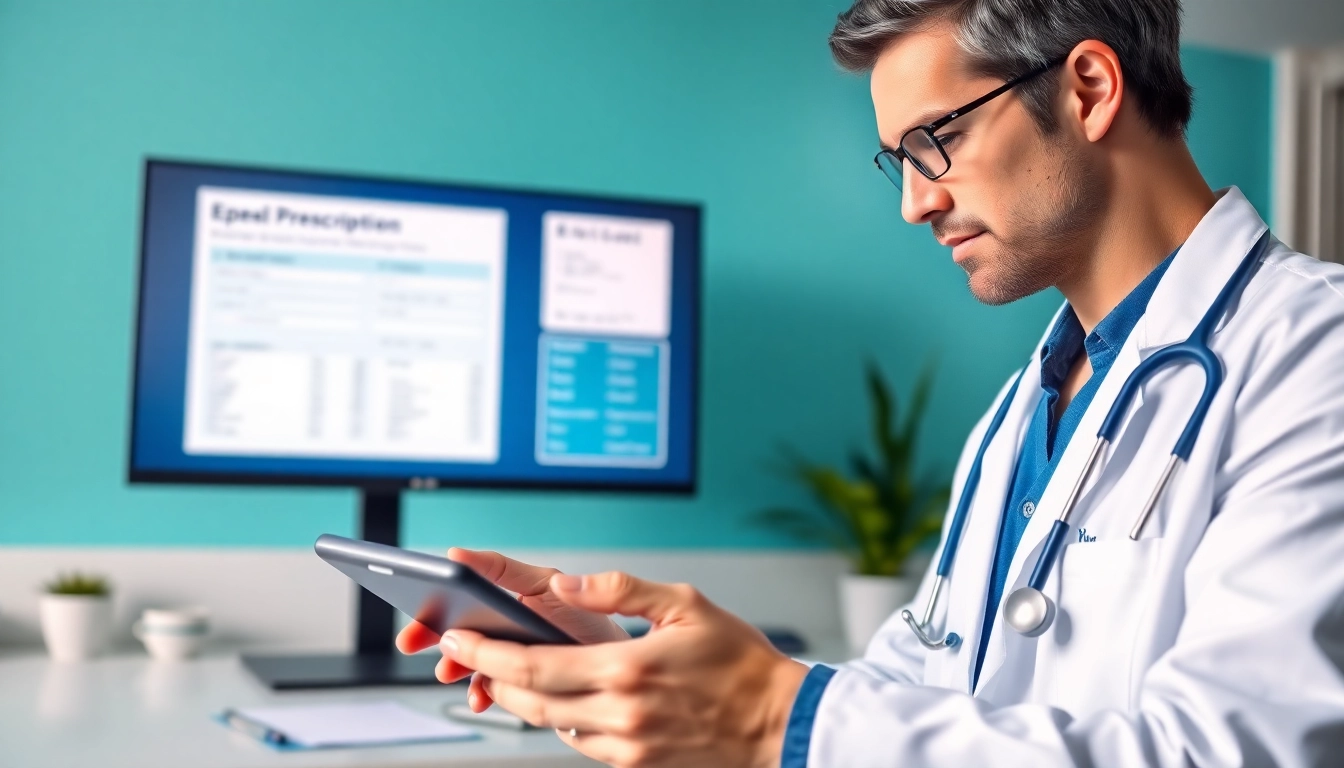
Understanding Eprescription Apps for iOS
Definition and Overview of Eprescription Apps
Eprescription apps are sophisticated digital tools designed specifically for healthcare providers to generate and manage prescriptions electronically. These apps significantly reduce the reliance on paper prescriptions, streamlining the whole prescription process in various healthcare settings. As the healthcare industry pivots towards a more digital ecosystem, eprescription apps for ios have emerged as essential tools for enhancing both provider efficiency and patient care.
How Eprescription Apps for iOS Work
Eprescription apps for iOS operate on a fundamental principle of electronic data interchange. Following a comprehensive patient evaluation, a healthcare provider enters prescription details into the app, which subsequently processes this information. The app communicates securely with pharmacies to send the prescription directly, thereby eliminating potential errors associated with handwritten notes. Most e-prescribing systems also include integration with patient management systems, allowing for a seamless workflow from diagnosis to disposition.
Key Features to Look For
While exploring e-prescription apps for iOS, certain key features are critical to maximizing their benefits:
- User-friendly Interface: A simple interface enhances usability, allowing providers to navigate easily and minimize training time.
- Integration Capability: The ability to integrate with existing electronic health record (EHR) systems and pharmacy networks is crucial for ensuring seamless communication.
- Prescription Tracking: Features that permit tracking prescription statuses help in monitoring which prescriptions have been filled or need follow-ups.
- Compliant with Regulations: Ensure that the app adheres to national and state regulations for electronic prescriptions, including security standards.
- Mobile Accessibility: Since the app is aimed at iOS devices, it should function expertly across iPhones and iPads, enabling healthcare providers to prescribe from anywhere.
Benefits of Eprescription Apps for iOS
Improving Workflow Efficiency for Healthcare Providers
The primary advantage of using e-prescription apps for iOS is the drastic improvement in workflow efficiency for healthcare providers. By simplifying the prescribing process, clinicians can spend less time on administrative paperwork and more time engaging with patients directly. Moreover, these apps can support medication refills and renewals digitally, thus further controlling practice workflow.
Enhancing Patient Safety and Compliance
Safety and compliance are paramount in healthcare, and e-prescription apps significantly enhance both. By eliminating handwritten prescriptions, the chances of misinterpretation or errors due to illegibility are virtually eliminated. Furthermore, the automatic checks for potential drug interactions or allergies ensure that patients receive the most appropriate care, fostering a proactive approach to patient safety.
Streamlining Communication with Pharmacies
Effective communication with pharmacies is vital in the prescription process. E-prescribing apps facilitate direct communication, allowing for real-time updates and confirmations when prescriptions are filled. This streamlined communication can reduce the likelihood of delays and helps ensure that patients receive their medications promptly, thus improving overall satisfaction and outcomes.
Comparison of Top Eprescription Apps for iOS
Feature Breakdown of Popular Apps
When evaluating the landscape of e-prescription apps for iOS, it’s essential to examine a variety of features:
- iPrescribe: Allows for both controlled and non-controlled prescriptions with functionalities tailored for speed and convenience.
- MDToolbox: Offers comprehensive prescription management tools, emphasizing user-friendly access and quick referencing.
- DocUpdate: A mobile-first tool designed specifically for busy clinicians focusing on usability and speed in prescription management.
User Experience and Interface Considerations
The user experience can make or break the efficacy of an e-prescribing app. Features to prioritize include intuitive navigation, quick access to recent prescriptions, and ease-of-use during high-stress patient interactions. An app that is visually appealing and easy to learn can improve clinician satisfaction, leading to better adoption rates.
Pricing Models and Scalability Options
Pricing structures for e-prescribing apps can vary significantly. Some offer a one-time payment model, while others adopt monthly subscriptions or pay-per-use boots. Additionally, scalability is essential for practices that expect to grow. Look for solutions that allow adding more users or functionalities as your practice expands without necessitating a complete overhaul.
Challenges in Implementing Eprescription Apps for iOS
Overcoming Technical Obstacles
Technical issues such as software compatibility, system downtimes, and integration challenges can hamper the successful implementation of e-prescribing apps. It’s vital for healthcare organizations to have robust IT support during the transition to help troubleshoot and ensure systems run smoothly. Additionally, thorough testing before full-scale implementation can minimize disruption, offering a contingency for any unforeseen issues.
Ensuring Data Privacy and Security
Data security remains a significant concern in healthcare, particularly with apps storing sensitive patient information. Adopting apps that comply with HIPAA regulations and utilize encrypted data transmission protocols is crucial. Organizations must also conduct periodic audits to ensure compliance and mitigate any risks associated with data breaches.
Training Staff for Optimal Usage
Proper training for staff is essential to maximize the potential of e-prescription apps. Training programs should focus on app features, best practices for data entry, and policies surrounding e-prescribing. By investing in comprehensive training, healthcare organizations can foster confidence in their staff and encourage widespread adoption of digital tools, improving overall efficiency.
Future Trends in Eprescription Apps for iOS
Integration with Other Healthcare Technologies
As the healthcare landscape continues to evolve, the integration of e-prescription apps with other technologies is expected to grow. This may include enhanced interoperability with electronic health records, telemedicine platforms, and patient portals, allowing for a more holistic approach to patient care and streamlined workflows for providers.
Increasing Role of Telemedicine
Telemedicine has become more significant, especially in recent years. E-prescription apps will increasingly support remote consultations, allowing healthcare providers to prescribe medications directly during virtual visits. This shift will enhance accessibility for patients and extend the reach of healthcare providers.
Anticipated Innovations in User Experience
Futuristic trends indicate that e-prescription apps will hone in on user experience with advancements like AI-driven suggestions for medication management, predictive analytics for patient adherence, and customizable user interfaces. Such innovations will empower healthcare providers to make better-informed decisions and enhance patient outcomes.






